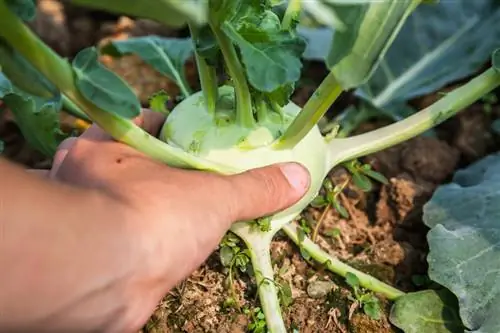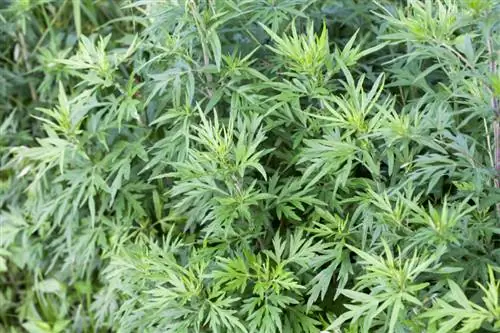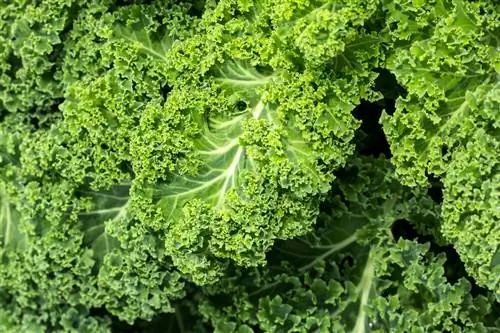- Author admin [email protected].
- Public 2023-12-16 16:46.
- Last modified 2025-06-01 06:02.
As a fast-growing vegetable that requires little care, kohlrabi is a popular and tasty side dish. Depending on the variety of tuber, it is extremely frost hardy. This frost improves the taste of the kohlrabi tuber. The kohlrabi is harvested until winter.

When should you harvest kohlrabi?
Kohlrabi should be harvested when the diameter of the tuber is about 10 centimeters to ensure a delicate taste. The best harvest time is between May and October, although some varieties can also be harvested into winter.
Sowing, growing and watering kohlrabi in the vegetable garden
If you want to harvest your kohlrabi tuber early, you can't avoid a pre-culture. It can be sown outdoors from April to May, although this requires the kohlrabi young plants to be grown. If the tuber is sown in February, it must be grown under glass. In order for it to germinate optimally, a temperature of 18 to 20 degrees is necessary. It goes into the bed in the garden at the end of March/April. The seedlings must be planted high, this ensures the formation of the kohlrabi tuber. It is precisely when the tubers form that the soil needs to be watered evenly. If the vegetable garden is well composted, the kohlrabi does not need any fertilizer.
Harvesting the kohlrabi
If the kohlrabi is planted with a planting distance of approx. 25 centimeters and a row spacing of approx. 30 centimeters, the planted vegetables can be harvested after 8 to 12 weeks. If the tubers have a diameter of approx. 10 centimeters, they are particularly tasty and tender. If you leave kohlrabi in the ground for too long, they become too large and quickly become woody. The best harvest time for most varieties is May to October. Different varieties can also be harvested well into winter. There is a wine-growing climate even into spring.
The Kohlrabi - Brassica oleracea var. gongylodes
Kohlrabi has many names and is used in different versions. This is how you can use the stalk turnip, top turnip, top kohlrabi or turnip cabbage:
- Fry in hot fat or grill on the garden grill - the kohlrabi slices are breaded
- cook with or without light sauce - serve as a side dish with potatoes and meat
- raw, cut into strips or slices, as raw food or grated as sauerkraut style
- steamed as a side dish
- cooked as a soup, casserole or stew ingredient
- stuffed with grilled meatloaf
- Kohlrabi leaves can be prepared like other leafy vegetables.
Rich in vitamins, the kohlrabi side dish can be served with almost anything. Kohlrabi contains proteins and fiber and only a small amount of fat or carbohydrates. It contains minerals such as phosphorus, calcium, potassium, magnesium and iron. Kohlrabi also contains vitamins A, C, B1, B2 and niacin. The kohlrabi leaves, which many consumers throw away, are also extremely useful as a vegetable. They have 10 times more iron and calcium and even 100 times more carotene. The vitamin C content of the leaves is also twice as high as that of the tuber.
Tips & Tricks
Harvest kohlrabi as early as possible because it is still tender then. Always peel the vegetables and eat them raw. As a side dish, don't let it cook for too long, it's better to just steam it. The rich leaves of the kohlrabi bulb can also be used as a vegetable.






